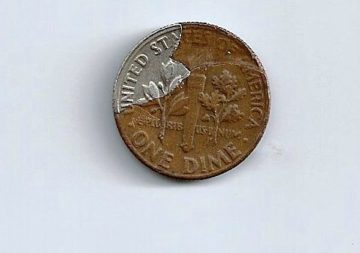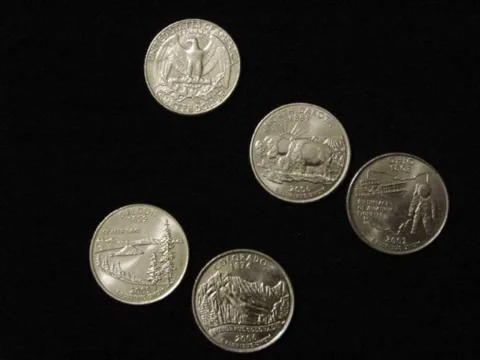The United States first began minting copper-nickel clad coins in 1965.

That was after several years of rising silver prices and a severe coin shortage that the U.S. Mint partly blamed on people hoarding silver coins from circulation.
- The dime and quarter were first struck in copper-nickel clad in 1965.
- The half-dollar was made with a 40% silver & 60% copper composition from 1965 to 1970. Half-dollars made for circulation since 1971 have been struck in copper-nickel clad.
- The last 90% silver dollar made for circulation was struck in 1935. In 1971, when production of dollar coins fully resumed, the dollar coin was struck in copper-nickel clad for circulation.
Copper-nickel clad coins from the 1960s and 1970s still circulate and can be found in everyday pocket change.
Except for errors, virtually all worn copper-nickel clad coins are worth only face value. They are, however, very easy to collect.
You can easily complete sets of copper-nickel clad Roosevelt dimes and Washington quarters from pocket change, spending just face value to accomplish those goals!
Here’s what you need to know about clad error coins.
I’m the Coin Editor here at TheFunTimesGuide. My love for coins began when I was 11 years old. I primarily collect and study U.S. coins produced during the 20th century. I’m a member of the American Numismatic Association (ANA) and the Numismatic Literary Guild (NLG) and have won multiple awards from the NLG for my work as a coin journalist. I’m also the editor at the Florida United Numismatists Club (FUN Topics magazine), and author of Images of America: The United States Mint in Philadelphia (a book that explores the colorful history of the Philadelphia Mint). I’ve contributed hundreds of articles for various coin publications including COINage, The Numismatist, Numismatic News, Coin Dealer Newsletter, Coin Values, and CoinWeek. I’ve authored nearly 1,000 articles here at The Fun Times Guide to Coins (many of them with over 50K shares), and I welcome your coin questions in the comments below!


